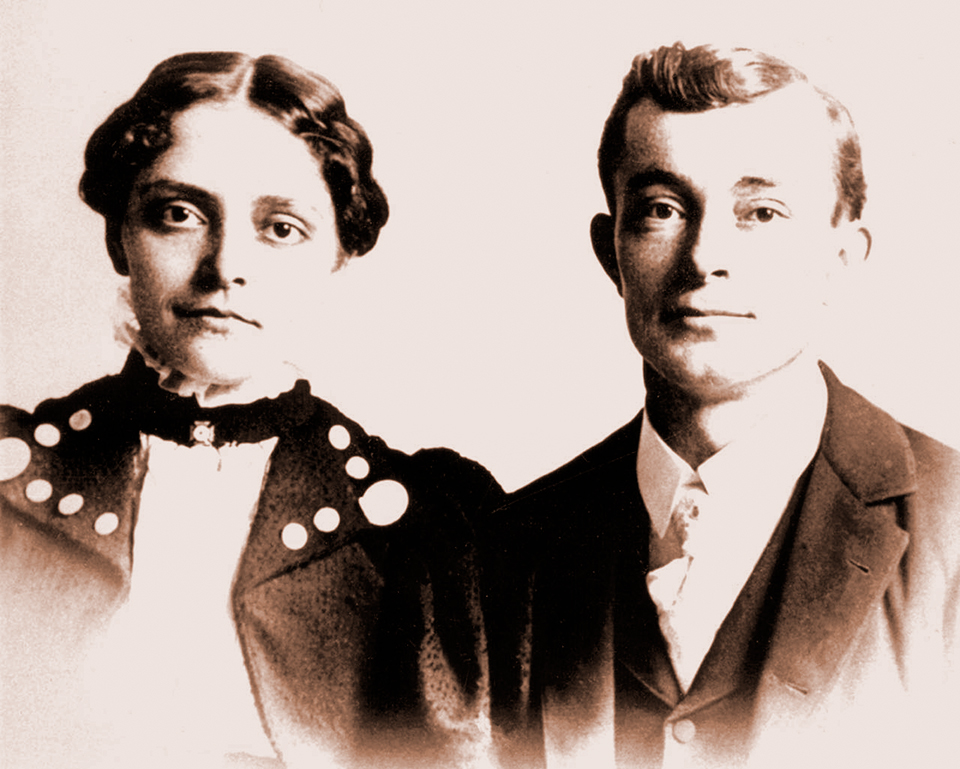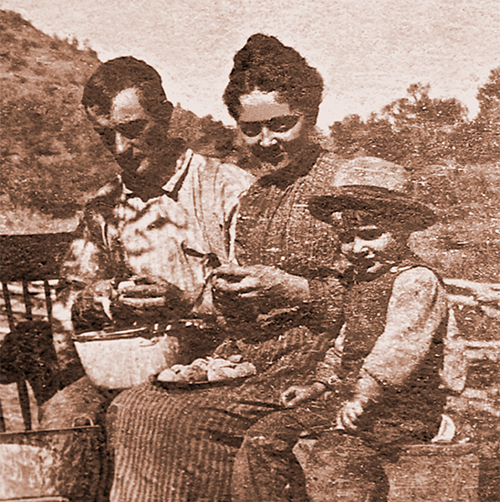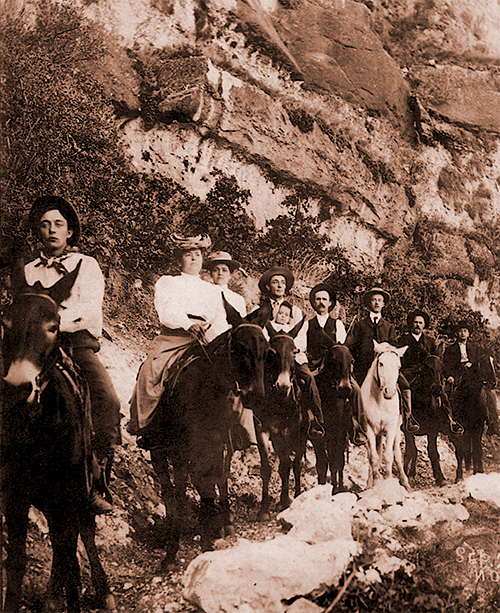When Amanda Miller looked down at her newborn daughter in 1877 and pronounced her to be named Sedona, she had no idea she had just coined an iconic word that would make marketers swoon, even into the 21st century.
Asked how this unusual name joined the names of siblings Minnie, Edward, Noah, Edna, John and Goldie, Amanda allegedly said, “There’s a first time for any name or word.”
I don’t know where it came from, but I know where it didn’t come from: It is not, as some opine, “anodes” spelled backward, a coded tribute to vortex energy in the rocks. It is not an Indian word. My personal hunch, having read of Sedonie as a Creole name, is that Amanda may have had that waft through her consciousness in Gorin, Missouri, and adapted it.
In any case, instead of being known only to people in that small Missouri town, Sedona married Theodore Carlton, or T.C., Schnebly on her 20th birthday, moved west to Oak Creek because the Methodists in Gorin didn’t take to T.C. being Presbyterian, and established a farm with the only home big enough to host visitors. Ever the entrepreneur, T.C. led the building of Schnebly Hill Road up to Flagstaff and began bringing visitors back with him. The next logical step was a post office. His first name choices, Schnebly Station and Oak Creek Crossing, were rejected with a terse “too long” scrawled in the application margin by the postmaster general in Washington, D.C. So, T.C.’s brother suggested naming the town after Dona, as T.C. called his wife. And so, Sedona it was in June of 1902, and Sedona it remains today.

My grandfather Ellsworth Schnebly was T.C. and Sedona’s oldest son. While I’ve always known basic facts about my great-grandmother, I began diving deep some years ago to write The Journal of Sedona Schnebly. In the course of that work, I’ve also begun to better understand the unattractive umbrage my grandfather used to take when people played fast and loose with his mother’s name or legacy.
As public domain, the name can be used for anything — and it pretty much is. My great-grandmother isn’t just a minivan; she’s a fishing lure, a chandelier, a color, a store in Hawaii, a Les Paul guitar and a pool table. She has also been, at times, a salsa, a bottled water and a beer. For the most part, I understand: People like pretty-sounding words. That’s why Tucson columnist Tom Beal, after a trip to Sedona, wryly opined that T.C. should have named his town Schnebly. People flock to Angel Fire, Cloudcroft, Aspen and Sedona. Had T.C. bestowed Schnebly on the Oak Creek mecca, Beal observed, the area probably would have remained relatively unspoiled.
While her name is anyone’s to use, her legacy is a horse of a different color — sometimes purple, in terms of the prose. When a travel writer suggested that were Sedona alive today, she would want a margarita and a massage, I had to remind myself to settle down. This person didn’t know (or bother to find out) anything about her. Sedona Schnebly was a member of the Women’s Christian Temperance Union, and she never sat down without peas to shell or crochet work to do. The idea that she might allow anyone other than her husband to touch her skin would have been unthinkable.
Legends grow in a vacuum. So who was my great-grandmother, instead of a sybaritic sylph of the red rocks?

Sedona Arabella Miller Schnebly was actually a lot like my daughter Sedona: short and curvy, with huge brown eyes; wavy hair; a sweet, clear voice; and a deep love of music and art. She was dignified and reserved, no matter the maelstrom of feelings roiling beneath the surface. (T.C., on the other hand, had a lot of my son Rye’s traits: odd thumbs, tireless dedication to work, quick humor, deep interest in other people.)
Genteel and prosperous, the Millers provided Sedona with elocution lessons and instruction in three languages, along with the gentle feminine arts taught at the Gorin Academy. Sedona earned a teaching degree and was a prodigious writer, spending a treasured hour after lunch on daily correspondence. Always religious, she taught Sunday school and played the piano at Wayside Chapel, to which she and T.C. contributed out of his monthly pension check.
Also from her early life: That wrong-religion thing was enough to get her written out of her parents’ will, and probably prompted the couple to move west. Their daughter Clara remembered that Sedona and T.C. were courting at the same time Sedona’s sister Lillie was being courted by a charming beau named Loring Johnson. The scuttlebutt on the streets of Gorin was that the girls’ father, Phillip Miller, was going to get 100 sons–in-law: “Loring was one, and T.C. was double zeroes.” It’s a bit of sweet justice to me that while T.C. went on to immortalize Sedona by naming the town after her, Loring turned out to be a feckless mess, ending up at Leavenworth for embezzlement. I loved writing about that in the book, on behalf of misjudged couples everywhere.

The worst chapter of their lives involved the death of their 5-year-old daughter, Pearl. Out rounding up their cattle, Sedona held 2-year-old Genevieve in front of her on the horse, while 7-year-old Ellsworth and Pearl rode their cow ponies. Pearl had bent down to pick up an arrowhead, looping the reins around her neck, when a cow began to stray. Her pony leaped after it, Pearl tumbled, and the pony bolted back to the house, where Sedona and Ellsworth arrived to find Pearl’s small, broken self.
I think a woman in her 20s who had been cooking and cleaning for a family and lots of guests may have already been more used up than was healthy. She plunged into a depression, and the doctor finally told T.C. to “move her or lose her.”
When I asked Aunt Clara if most women didn’t lose a child in those days, she nodded and offered more information. “It couldn’t have helped that T.C. dug that little grave outside the kitchen window, where she had to see it all the time,” she said. The family returned to Gorin and mended fences; they later homesteaded in Boyero, Colorado, before returning to Oak Creek, which had more visitors by then. Based on what I know, that would have made Sedona a bit uncomfortable. As I’ve written in her voice in The Journal of Sedona Schnebly: “Often these enthusiastic visitors look a little disappointed when they meet me. They hoped for a sandstone sprite, and instead, they get this very reserved normal person quite probably faintly scented of potatoes or jam or something equally mundane.
“And that’s fine. If they found me fascinating they’d scrutinize me more closely. A brief meeting is more than sufficient.”
Mostly, Sedona and T.C. were blessed to be deeply in love throughout their lives. I was enchanted when my Aunt Pat showed me T.C.’s signature, dated on their wedding day, in Sedona’s guest book, where he wrote, “The greatest day of my life.” They celebrated their golden anniversary several years before Sedona died in 1950, at age 73. The bell at the Wayside Chapel became T.C.’s cause and mission; when their son Hank found and shipped one from Denver, it was his father who proudly rang it as a tribute to Sedona. At the risk of my own prose getting a deep shade of lavender, I believe she heard it from heaven — and loved it more than any harp music.

